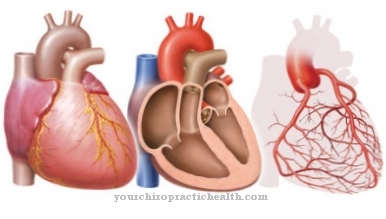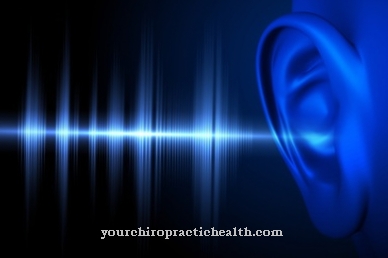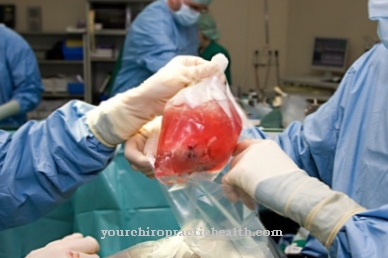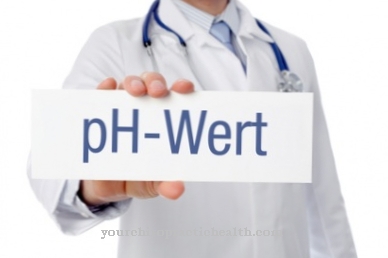The Responsiveness or that Responsiveness is the ability of a person to react as quickly and appropriately as possible to stimuli from the environment. After an acoustic, optical or haptic stimulus, we always react with a motor response behavior.
What is the responsiveness?

The ability to react describes the ability to react appropriately quickly to stimuli. It shows how quickly we are ready when it matters. Responsiveness or Responsiveness differs according to the type of stimulus and response. The ability to react to ball games within two groups can be clearly seen.
The ability to react is influenced by phasic attention parameters. Various physiological performances are necessary in order to generate a response behavior to the external stimuli.
Humans have various attention functions that can be disturbed. With selective attention, we focus on specific aspects of a task. In this way we can react quickly and ignore irrelevant stimuli.
Directing attention to a goal or a specific task is the basic prerequisite for general performance and for solving cognitive tasks. The ability to react can be promoted so that the reaction time between stimulus and response behavior is reduced to a minimum.
Function & task
The ability to react is different in each person, but should be faster in a young person than in an old person. The stimulus response can be, for example, a simple motor reaction, but also a complex motor reaction.
Our attention to environmental stimuli is influenced by our physiological status, but also by our own emotions and by the intensity of external stimuli, the color, the spatial relationship and their classification. If the stimuli are new and very intense, they have a particularly high information content and our attention is automatically drawn to them.
The ability to react follows an action-oriented attention model. Accordingly, it takes place in four phases: At the beginning there is perception, followed by the identification of the relevant stimulus, we choose a reaction and immediately afterwards a motor program starts. These processes run automatically, but can be interspersed with analytical processes.
Each reaction is divided into individual phases. In anticipation of a stimulus, the level of awareness increases. The stimulus is presented, followed by the latency phase as a decision time and then the motor action.
The reaction time is the time interval between the stimulus being offered and the execution of the motor reaction. The latency period is the time it takes for the excitation to reach the muscles through the nerve tract. The decision time defines the duration of the information processing.
Medicine differentiates between simple reactions and elective reactions. In choice reactions, we perceive several stimuli, but only react to one critical stimulus. In the case of multiple choice reactions, several critical stimuli should be responded to. The multiple reaction is also influenced by the type of signal, the type of differentiation, the frequency of the stimulus and the ability to carry out associative couplings between stimulus and reaction.
The reaction can only take place if the stimulus meaning has been interpreted correctly. In order to react appropriately to a corresponding stimulus, we therefore need intact senses such as intact hearing, good eyesight and an intact ability to react.
You can find your medication here
➔ Medicines against concentration disordersIllnesses & ailments
Attention, alertness, and expectation of a reaction are fundamental mental processes. Attention protects us from danger. This is followed by the planning, initiation and execution of an action. A healthy person is able to adjust cognitively, can coordinate the respective information, precisely classify his actions and monitor their goal.
These processes can be restricted in sick people. Different disorders lead to deficits in the ability to react. These can be hearing disorders, for example, which make it difficult for those affected to follow a conversation or can no longer perceive background noise. Your response is either delayed or absent.
Stress affects responsiveness as well as neurological damage. The reaction behavior of patients is measured with determination tasks. Here, parameters such as the number and type of errors, the time required or the number of tasks processed are queried. This diagnostic procedure allows a better classification of the symptoms.
Attention disorders result in slower actions or cause a higher error rate when solving various tasks. Acquired brain damage can lead to neuropsychological performance deficits, for example.
Even colds can severely limit the ability to react. Therefore, doctors recommend that people with flu symptoms refrain from driving. Drugs that affect the brain also have an impact on the speed of writing. They often cause tiredness and reduced alertness, making driving a hazard for the driver and others.
Pain relievers and cough suppressants have a similar effect. It is also known that alcohol reduces reactivity. Even a glass of wine can impair vision, especially night vision.
Parkinson's disease is also associated with impaired reactions. As a result, these patients are at greater risk of falling. However, people with motor impairments or mental deficits can train their responsiveness. Over time, they become more efficient. The training goals can be set at different levels.
There are many different therapies that are tailored to the needs of the sick. Therapeutic riding can also stimulate the senses and increase the sense of rhythm, the ability to orientate and the ability to react.













.jpg)

.jpg)
.jpg)











.jpg)